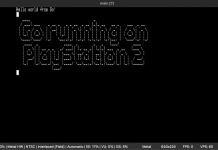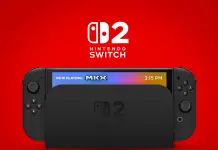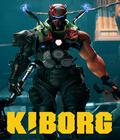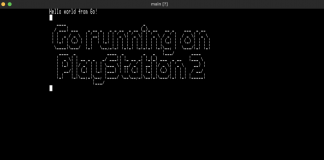I’ve been staring at this blank writing document for what feels like hours, trying to figure out how to start this review. Over the years, I’ve played so many games that boast Hotline Miami inspiration but fail to really capture the marriage between high-violence gameplay and the best soundtrack you’ve ever heard. Developer Don Yasa Crew manages to take this core foundation and fully make it their own in their game, Sonokuni. What I didn’t expect was for them to double down on a narrative rooted in culture and the desire to hold onto the one thing that can’t really be explained: your soul.
While you may not expect it, Sonokuni has a story where players assume the role of Takeru, a resident of the Sonokuni village who is currently at odds with some newcomers to their region. This new race calls itself the Wanokuni and has figured out a way to be nearly immortal to disease or aging by merely taking a pill. Those who take this assimilation pill turn into a sort of plant-like humanoid whose only defining feature is their head—or hat? I don’t know, but it’s usually a plant. In this story, the Wanokuni have already established themselves in the region, gaining followers and influence over the Sonokuni tribe. This starts a divide between the village leaders and Takeru, who wants to hold onto the values of her culture and not assimilate.
The Sonokuni are in a tough place. They see the advancements of the Wanokuni tribe, who are overly helpful at times, even hospitalizing an ill Sonokuni member without assimilating them, but they also don’t want to assimilate and lose the defining details that make them human. This mental tug-of-war between the citizens eventually comes to a head, and Takeru is now in the middle of it all. There are also some high-fantasy elements in the narrative, as Takeru has two inner voices that give opinions on her path but also reveal unique aspects of how and when this story actually takes place. It’s a decent narrative with a well-rounded hook that really kept me motivated to clear the stages if only to see Takeru’s next move.
Now, I should mention that Takeru has a secret. There’s currently a serial killer on the loose killing Wanokuni villagers, and yeah, it’s Takeru. She does not want to assimilate and doesn’t even like talking to the Wanokuni, but her village leaders want to work with them, which causes a few arguments.
Fast-Paced, Brutal Gameplay with a High Skill Ceiling
Anyway, the gameplay has you travel across insanely designed stages, kill Wanokuni members, and sometimes take down a boss. The game is played from an over-the-top perspective of Takeru as players enter a room and are immediately attacked by various enemies within the space. Each enemy has a unique attack that requires you to Attack, Guard, or get the hell out of the way.
There’s a nice variety of enemies, but when they put them all together in the later levels, the challenge turns from manageable to chaotic. This isn’t a negative on the experience, as there are difficulty options, and you’re given enough time to learn enemy telegraphs and ways to avoid death, but that doesn’t stop this game from being challenging. Luckily, Takeru has an ability that can slow down the action, but it’s limited, so knowing when to use it becomes another part of the experience you need to manage.
If you play on the easiest difficulty, you do have unlimited slowdown, and you can switch to it at any time. I’ll admit, I had to do this on the last boss because that fight is impossible. I actually liked this approach to difficulty, as it doesn’t really change much about the enemies, but it gives you an option to learn how to avoid attacks so you can improve your skills.
After beating the game, you unlock an even higher difficulty and a way to set up speedrun options. While most of the time I wouldn’t expect games like this to have replay value for general gamers, Sonokuni has branching paths and more challenging rooms during stages that you can attempt or avoid. I wish the team allowed you to save outside of doors in case you want to turn off the game, but right now it auto-saves at the beginning of the levels. The levels aren’t huge, so it’s not the worst system, but a mid-level save option should be available. Further, the team added a system that shows you the easiest route to the end of the stage, making navigation feel pretty natural against the insane environment designs.
One-Hit Deaths and Rhythm-Based Combat
This is a one-hit-and-you-die game. Each room seems to be designed in a way that encourages players to find a rhythm with Attacking, Defending, and Deflecting projectiles. Enemy moves can be easily read, but the speed at which things happen is almost frame by frame. Getting through the rooms takes practice, and although I was frustrated, the soundtrack was there to keep my heart rate up. I didn’t mention this before, but the developer is also a group of Japanese rappers, and they showed up for this experience. The group gives off Creep Nuts vibes, who recently gained more fame from their Dandadan anime opener, but I found them to be way more experimental with their sound. Relying on chants and creative hooks, each track fuels the experience and makes it feel like you’re in an anime music video at times, as the action pairs perfectly with the beat.
Final Thoughts: A Challenging but Rewarding Experience
The entire game is about 6–10 hours long and really left an impression on me. I loved honing my reaction skills to take on the high challenge this game provides, and I found the unique setup of deflecting and guarding specific enemy attacks to be a nice feature. However, I would have liked it if my guarded attacks—which are the only way to avoid blue projectiles—could hurt enemies if they hit them. I saw some potentially cool setups that would have benefited from that. In terms of feedback for the devs, there are some optimization issues that need to be addressed. Too many times, I experienced some slowdown in runs, but it didn’t happen consistently, so I blamed a few deaths on random framerate issues. Luckily, attempting a room again takes seconds, and I was having too much fun to let something like that bug me.
Sonokuni left me a bit surprised by how ambitious this small team got in terms of challenge. They show high trust in their players’ skills by creating a difficulty setting that encourages you to refine your abilities in such a demanding way. Regardless of the challenge, I was having a ton of fun learning the moves, besting enemies who killed me dozens of times, and uncovering a generally powerful narrative that I wasn’t expecting. This is a weekend experience that—even if you suck at it—will at least give you some cool music to listen to. And on that note, I also want to thank the devs for stopping the music when you pause the game.
Sonokuni (PC)
Good
Sonokuni is a blisteringly stylish, Hotline Miami-inspired action game that fuses razor-sharp gameplay with a culturally rich narrative and a hypnotic Japanese rap soundtrack. While a few technical hiccups and quality-of-life gripes slow it down, the game’s bold artistic choices and challenging combat offer a short but unforgettable experience.
The Good
-
Visually and aurally striking – The soundtrack by Japanese rappers elevates the atmosphere to anime music video levels. -
Unique narrative themes – Explores cultural identity, assimilation, and resistance with surprising emotional depth. -
Challenging, rhythmic combat – One-hit death gameplay that rewards skillful timing and enemy reading.
The Bad
-
Occasional performance issues – Random framerate drops can impact precision gameplay moments. -
No mid-level saving – Lack of quick saves between doors can frustrate players who need to stop mid-session.




































